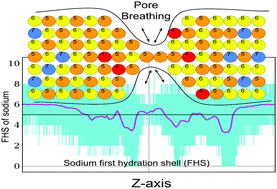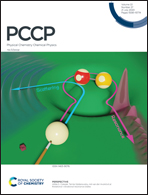The mechanism and energetics of a ligand-controlled hydrophobic gate in a mammalian two pore channel†
Abstract
In the last decade two-pore intracellular channels (TPCs) attracted the interest of researchers, still some key questions remain open. Their importance for vacuolar (plants) and endo-lysosomal (animals) function highlights them as a very attractive system to study, both theoretically and experimentally. Indicated as key players in the trafficking of the cell, today they are considered a new potential target for avoiding virus infections, including those from coronaviruses. A particular boost for theoretical examinations has been made with recent high-resolution X-ray and cryo-EM structures. These findings have opened the way for efficient and precise computational studies at the atomistic level. Here we report a set of multiscale-calculations performed on the mTPC1, a ligand- and voltage-gated sodium selective channel. The molecular dynamics and enhanced molecular dynamics simulations were used for a thorough analysis of the mammalian TPC1 behaviour in the presence and absence of the ligand molecule, with a special accent on the supposed bottleneck, the hydrophobic gate. Moreover, from the reconstructed free energy obtained from enhanced simulations, we have calculated the macroscopic conductance of sodium ions through the mTPC1, which we compared with measured single-channel conductance values. The hydrophobic gate works as a steric barrier and the key parameters are its flexibility and the dimension of the sodium first hydration shell.



 Please wait while we load your content...
Please wait while we load your content...